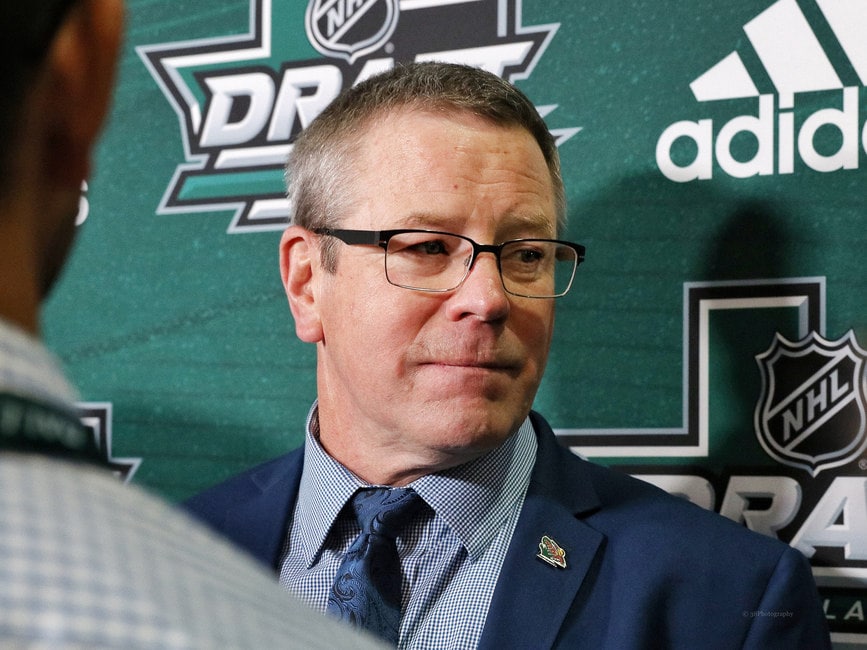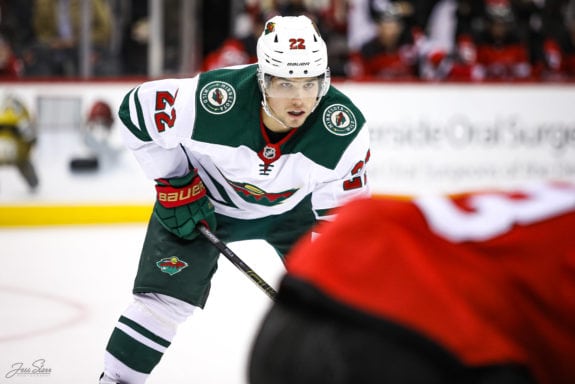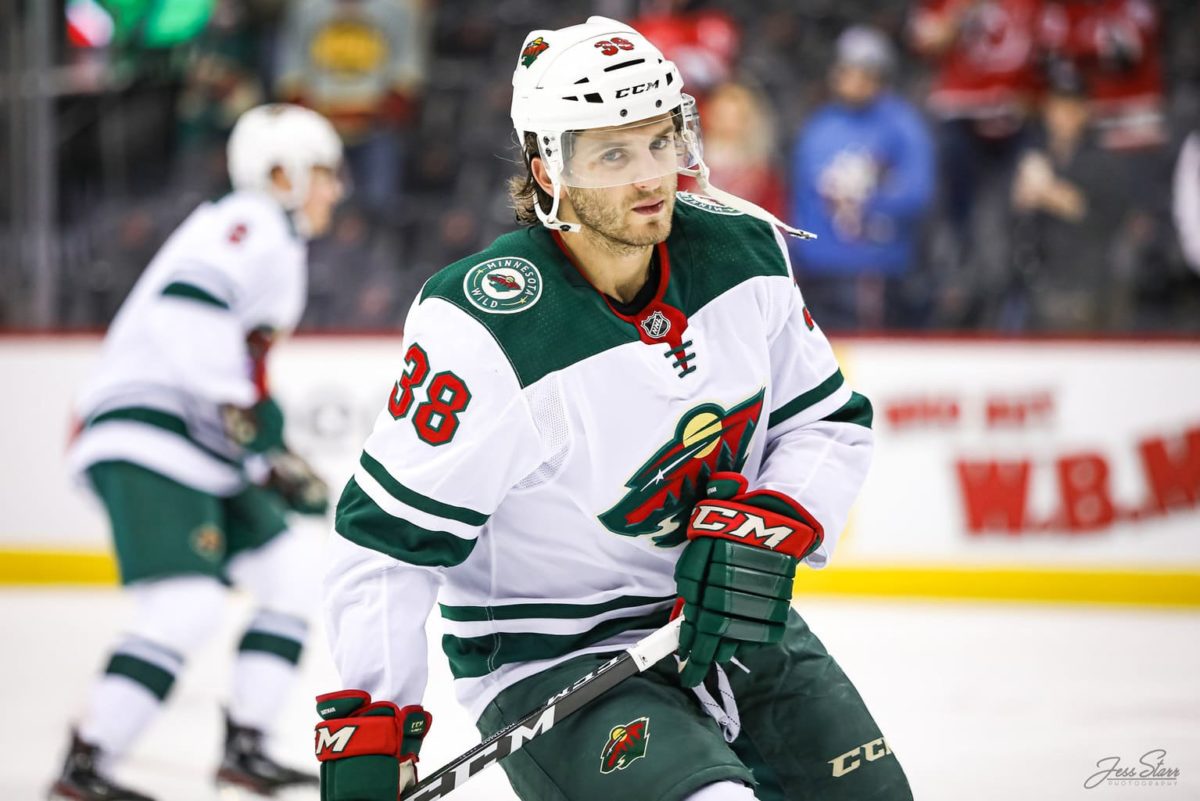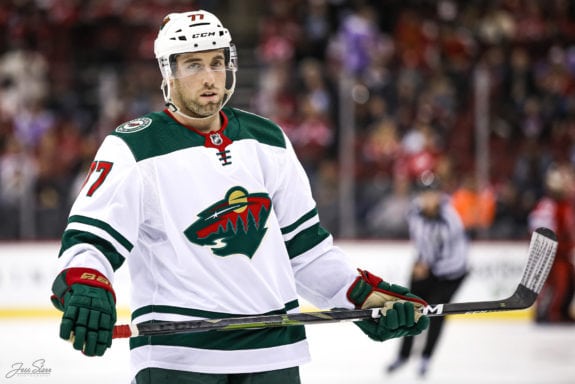
It was a promising start for Paul Fenton once he replaced long-time Minnesota Wild general manager (GM) Chuck Fletcher. After years as the reliable assistant GM for David Poile and the Nashville Predators, Fenton was viewed as an experienced voice in the hockey world waiting on the opportunity to guide his own team.
However, his time with the Wild ended after only 14 months on the job. A mix of allegedly creating a toxic work environment, a distaste for analytics and an unclear vision for the team’s future pushed team owner Craig Leipold to oust Fenton, according to Michael Russo. (from Russo: ‘The downfall of Paul Fenton: Inside the GM’s turbulent 14 months with the Wild’, The Athletic, 08/02/2019)
At the time of his firing on July 30, 2019, Fenton’s body of work included two entry drafts and one regular season, which saw the Wild miss the postseason. In addition to the organizational calamity, Fenton’s signings and trades were berated by fans and the media alike, and added further confusion of what the Wild were trying to be — a veteran core trying to make a deep run or a team in transition waiting on its young talent to develop.
Leipold’s quick pivot to hire current GM Bill Guerin has remedied some of this confusion, made evident by the team’s current success as a top team in the Honda West Division.
However, some of Fenton’s moves deserve some re-examination. The influx of production from its young core has balanced out the aging roster, but it is not difficult to see the positives that surprisingly came from even the more controversial decisions during the former GM’s 14-month stay. For all the backlash Fenton received at the time, some of his moves panned out and are key factors in the 2020-21 turnaround.
The former GM did not address the team’s most pressing needs for a true top-line centre or remedy its cap situation, but he provided solid depth without compromising draft picks and prospects.
Kevin Fiala
Before the 2019 Trade Deadline, Fenton moved long-time cornerstone forward Mikael Granlund for the younger Kevin Fiala, and it was questioned immediately by the media, fans, and even those within the Wild organization.
Fenton was adamant to acquire Fiala by any means necessary, and his discussions with members of the Wild organization were scarce prior to the deal. Since being the ninth pick in the 2010 Draft, Granlund was a reliable top-six forward coming off 67- and 69-point seasons and was poised to become a Frank J. Selke Trophy candidate.
For the Wild, Fiala struggled mightily to close out the 2019-20 season with the Wild, with seven points (3-4-7) in 19 games and a minus-12. The immediate returns on the deal added frustration to the fanbase, who viewed Fenton taking on an unfair swap with his former employer.

However, the 24-year-old Fiala emerged with 54 points in 64 games last season as a legitimate offensive threat for the scoring-deprived Wild. Despite an early season suspension, he is contributing 17 points (10-7-17) in 30 games so far this season.
In terms of security, Fiala is just entering his prime. He signed to a two-year bridge deal at $3 million per season and will be a restricted free agent in the offseason. His emergence fits the team’s youth movement with Jordan Greenway, Joel Eriksson Ek, Kirill Kaprizov and Kaapo Kähkönen taking on more significant roles this year.
For the Predators, Granlund’s production quickly tapered off once he arrived in Nashville, scoring 49 points in 111 games over three seasons. The 29-year-old remained unsigned for most of the offseason until returning to the Predators before the 2020-21 training camp began at $3.75 million for one year.
He tops 2021 Trade Deadline big boards, as he and Nashville continue to struggle with an inevitable rebuild looming.
Mats Zuccarello
On the first day of free agency in 2019, Fenton gave the then-32-year-old winger a five-year, $30 million contract.
The red flags were obvious before the signing took place. Zuccarello, who was traded to the Dallas Stars from the retooling New York Rangers at the 2019 Trade Deadline, missed significant time with an upper-body injury. He only played two regular season games and contributed 11 points in 13 playoff games as a Star.
Second, the signing was not in line with the future and was viewed as another lofty veteran contract that would further complicate future cap space decisions. Initially, this was another case of careless spending to maintain the costly veteran core and keep the small playoff window open.

Zuccarello’s first full season with the Wild was a far cry from his New York Rangers days of 50 to 60 points. He managed 39 points (15-22-37) in 65 regular-season games and one assist in four play-in round games.
There was speculation that Zuccarello was dealing with an unhealed injury throughout the season, which was confirmed after having surgery on his right arm in the offseason. The recovery time delayed his 2020-21 debut to Feb. 16 after the Wild’s games were postponed with several players landing on the COVID-19 list.
Yet, Zuccarello’s seamless transition into the lineup has been another success this season, especially for a player that missed training camp and was not afforded time to become acquainted with the new-look roster. The 33-year-old has always been a reliable top-six winger, but he was finally producing at that level for the Wild.
Ryan Hartman
Hartman was another 2019 offseason free agent, signing for two years at $1.9 million per season. The power forward bounced around the league, going from Chicago to Nashville, Philadelphia, and Dallas before settling in Minnesota. As a former first-round pick in 2013 that showed glimpses of top-six potential in his early Chicago days, Hartman was brought in as a depth option on the wing.

Given his contract and production last season (20 points in 69 games), Hartman lived up to his role. This year, however, the scoring touch has re-emerged. The 26-year-old has 12 points in 28 games so far, and has been trusted to play centre at times. This low-risk, under-the-radar signing provided the Wild with a reliable top-nine forward who helps generate offence from the bottom lines.
Brad Hunt
The 32-year-old journeyman defenceman was acquired during the 2018-19 season from the Vegas Golden Knights (along with a sixth-round pick) in exchange for a fifth-round pick. After bouncing back and forth between the AHL and NHL for seven seasons after leaving the NCAA, Hunt finally became a fixture on the Wild’s back end.
In his first full season in 2020, Hunt had eight goals and 11 assists in 59 games. He found his place on the third pairing and the second power-play unit.

Pending injuries, head coach Dean Evason has kept his defensive core intact this season, and with the rise of Carson Soucy, Hunt has only played 11 games in 2020-21. However, Hunt remains a reliable option as the season progresses, and has far exceeded the price Fenton paid to get him.
Nico Sturm
The Augsburg, Germany-native was a highly touted forward after three seasons with Clarkson University in the NCAA. A top-10 Hobey Baker Award finalist in 2019, Sturm was heavily pursued by Fenton, who viewed the signing as having an extra first-round selection in April 2019. Sturm’s scoring potential coupled with his two-way game and grit are what enamored Fenton to sign the college star and hold him at such a high regard.
The 25-year-old became a consistent part of the Wilds’ forward group this season after playing the majority of 2019-20 with the AHL’s Iowa Wild.
In 37 NHL games so far, Sturm has seven points (4-3-7), and is gradually gaining experience in the bottom six of the lineup after dealing with injuries early on this season. Listed as a natural centre, he is playing left wing when he is in the lineup. As the Wild continue to balance out injuries and cap space, he often finds himself on the taxi squad in between games.
He has the potential to move up this list depending on whether he can carve out a bigger role on the team and replicate the offensive production he showed in college. It is too early to tell, but Sturm may be an option to help the Wild finally stabilize their centre depth long-term.
Final Thoughts
As a reminder, Fenton’s time as the Wild’s GM was tumultuous and unsustainable for the organization, but his impact on the current success is undeniable. Zuccarello has rediscovered his offensive production and Fiala developed into a building block for the future.
On the trade front, Fiala and Hunt’s acquisitions were excellent payoffs, but his mistakes were obvious as well. Fenton was fleeced by the Carolina Hurricanes in the Rask for Nino Niederreiter deal. The same can be said about trading Charlie Coyle to the Boston Bruins for Ryan Donato and a draft pick on Feb. 20, 2019. Donato was flipped in the recent offseason to the San Jose Sharks for a third-round pick after his development plateaued — the team took a loss in terms of asset management.
Second, a large part of the Wild’s emergence this season can be attributed to the young talent, who were already in place during Fletcher’s GM tenure.
Lastly, it is too early to tell how well his draft choices will pan out, but so far 2019 first-rounder Matthew Boldy and second-rounder Vladislav Firstov continue to shine in the NCAA, and third-round pick Adam Beckman broke out offensively last year, scoring 107 points in 63 games for the WHL’s Spokane Chiefs.
Sports journalist covering the Minnesota Wild. Currently completing a journalism degree in Toronto, Canada.
